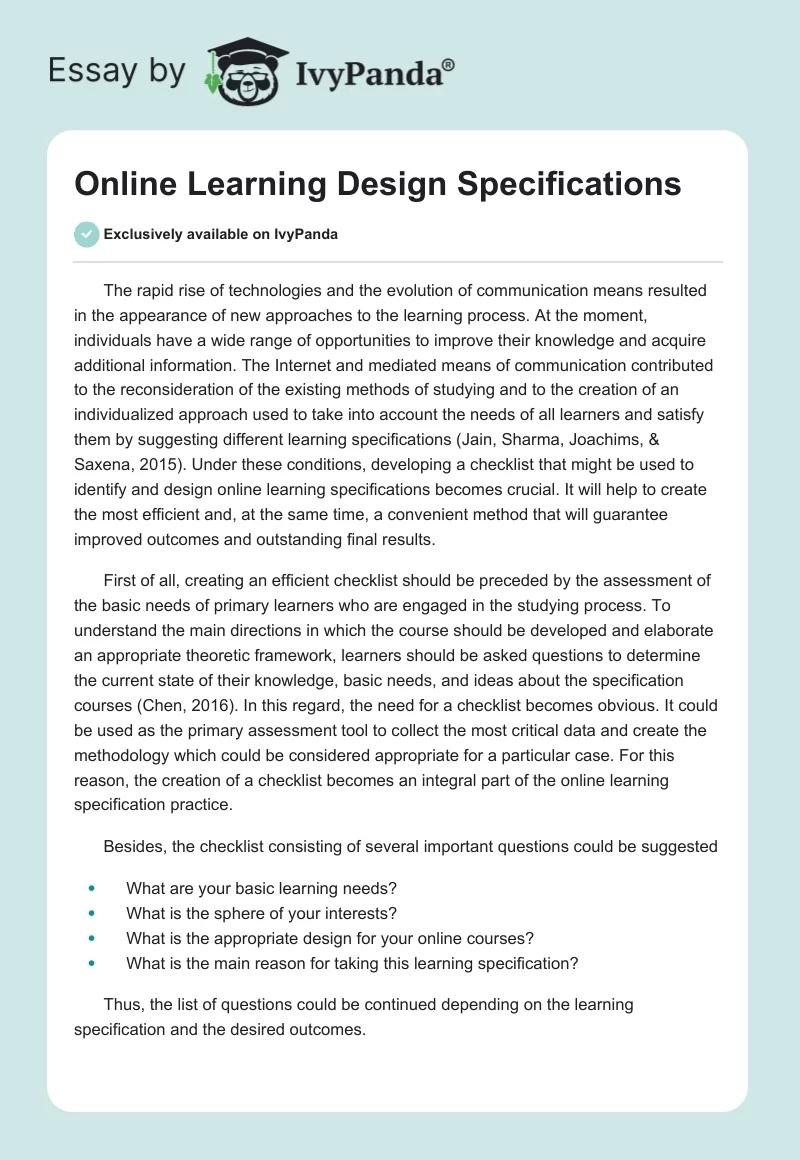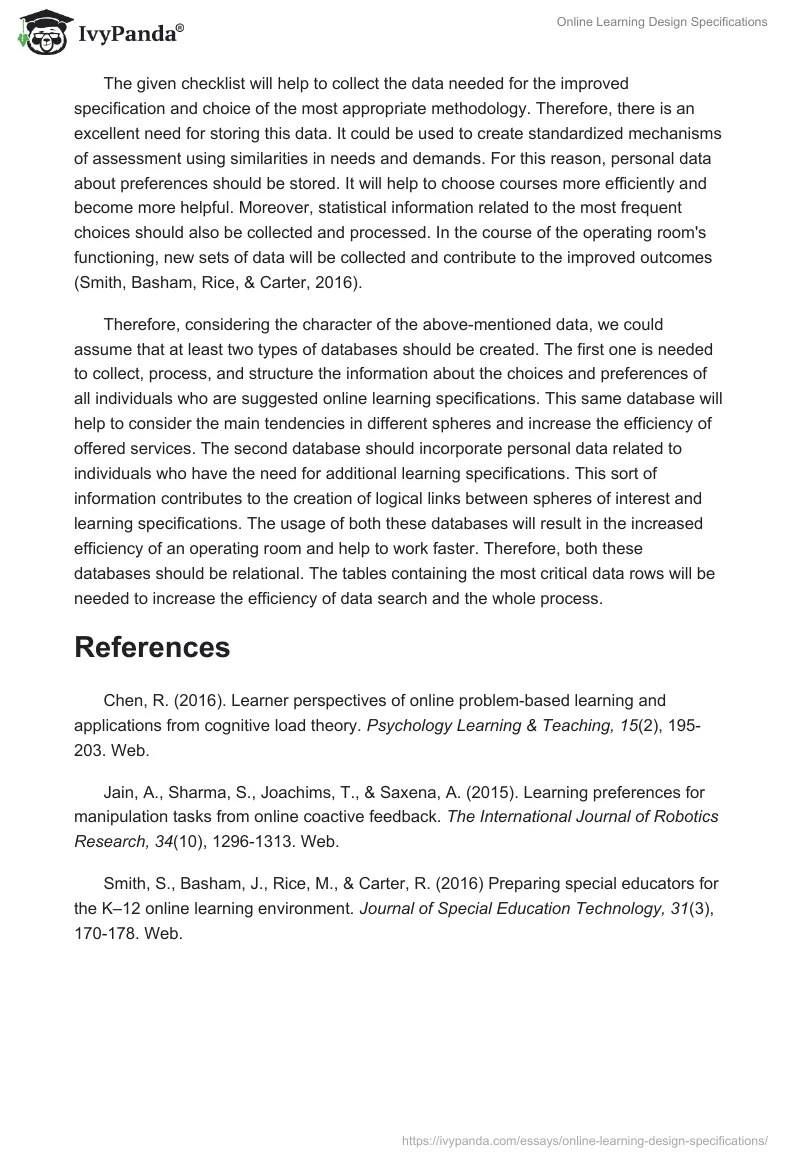The rapid rise of technologies and the evolution of communication means resulted in the appearance of new approaches to the learning process. At the moment, individuals have a wide range of opportunities to improve their knowledge and acquire additional information. The Internet and mediated means of communication contributed to the reconsideration of the existing methods of studying and to the creation of an individualized approach used to take into account the needs of all learners and satisfy them by suggesting different learning specifications (Jain, Sharma, Joachims, & Saxena, 2015). Under these conditions, developing a checklist that might be used to identify and design online learning specifications becomes crucial. It will help to create the most efficient and, at the same time, a convenient method that will guarantee improved outcomes and outstanding final results.
First of all, creating an efficient checklist should be preceded by the assessment of the basic needs of primary learners who are engaged in the studying process. To understand the main directions in which the course should be developed and elaborate an appropriate theoretic framework, learners should be asked questions to determine the current state of their knowledge, basic needs, and ideas about the specification courses (Chen, 2016). In this regard, the need for a checklist becomes obvious. It could be used as the primary assessment tool to collect the most critical data and create the methodology which could be considered appropriate for a particular case. For this reason, the creation of a checklist becomes an integral part of the online learning specification practice.
Besides, the checklist consisting of several important questions could be suggested
- What are your basic learning needs?
- What is the sphere of your interests?
- What is the appropriate design for your online courses?
- What is the main reason for taking this learning specification?
Thus, the list of questions could be continued depending on the learning specification and the desired outcomes.
The given checklist will help to collect the data needed for the improved specification and choice of the most appropriate methodology. Therefore, there is an excellent need for storing this data. It could be used to create standardized mechanisms of assessment using similarities in needs and demands. For this reason, personal data about preferences should be stored. It will help to choose courses more efficiently and become more helpful. Moreover, statistical information related to the most frequent choices should also be collected and processed. In the course of the operating room’s functioning, new sets of data will be collected and contribute to the improved outcomes (Smith, Basham, Rice, & Carter, 2016).
Therefore, considering the character of the above-mentioned data, we could assume that at least two types of databases should be created. The first one is needed to collect, process, and structure the information about the choices and preferences of all individuals who are suggested online learning specifications. This same database will help to consider the main tendencies in different spheres and increase the efficiency of offered services. The second database should incorporate personal data related to individuals who have the need for additional learning specifications. This sort of information contributes to the creation of logical links between spheres of interest and learning specifications. The usage of both these databases will result in the increased efficiency of an operating room and help to work faster. Therefore, both these databases should be relational. The tables containing the most critical data rows will be needed to increase the efficiency of data search and the whole process.
References
Chen, R. (2016). Learner perspectives of online problem-based learning and applications from cognitive load theory. Psychology Learning & Teaching, 15(2), 195-203. Web.
Jain, A., Sharma, S., Joachims, T., & Saxena, A. (2015). Learning preferences for manipulation tasks from online coactive feedback. The International Journal of Robotics Research, 34(10), 1296-1313. Web.
Smith, S., Basham, J., Rice, M., & Carter, R. (2016) Preparing special educators for the K–12 online learning environment. Journal of Special Education Technology, 31(3), 170-178. Web.


